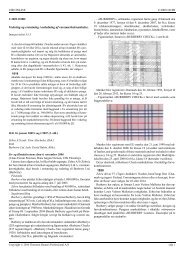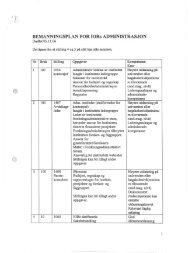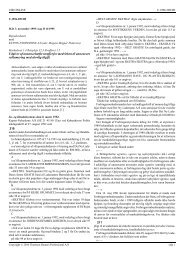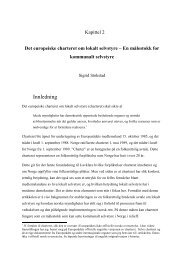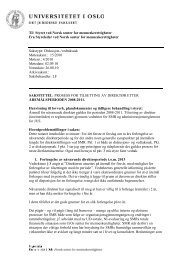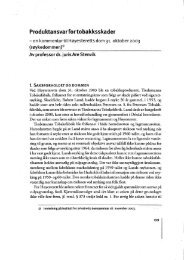Lee A. Bygrave (red.) YULEX 2002 - Universitetet i Oslo
Lee A. Bygrave (red.) YULEX 2002 - Universitetet i Oslo
Lee A. Bygrave (red.) YULEX 2002 - Universitetet i Oslo
Create successful ePaper yourself
Turn your PDF publications into a flip-book with our unique Google optimized e-Paper software.
............................................................................<br />
24 Emily M Weitzenböck<br />
who is to effect the performance which is characteristic of the contract has, at<br />
the time of conclusion of the contract, his habitual residence, or, in the case<br />
of a body corporate or unincorporate, its central administration. If the contract<br />
is ente<strong>red</strong> into in the course of that party’s trade or profession, that<br />
country shall be the country in which the principal place of business is situated<br />
or the place of business specified in the contract.<br />
According to the Giuliano-Lagarde Report [1980], the concept of characteristic<br />
performance essentially links the contract to the social and economic<br />
environment of which it will form a part. This is usually the performance for<br />
which the payment is due, such as, depending on the type of contract, the<br />
delivery of goods, the granting of the right to make use of an item of property,<br />
the provision of a service. The obligation to pay for such performance,<br />
on the other hand, should not be deemed to be the characteristic performance<br />
of the contract.<br />
Imagine a virtual enterprise made up a group of talented creative freelancers<br />
which was contracted by a French firm to design and produce a promotional<br />
brochure. The characteristic performance is the design and production of the<br />
brochure by the VE. The proper law, according to Article 4(2), is the principal<br />
place of business of the VE. If, as is often the case in practice, the VE has not<br />
been set up as a separate legal person, but its members are based in the same<br />
country – say, Italy – Italian law would be the applicable law. However, if the<br />
VE members are situated in different countries (eg, Italy and Austria) and the<br />
different stages of the design and production are being carried out in these<br />
countries, then, although the characteristic performance of the contract is identifiable,<br />
it points to two different countries. Such a situation makes the application<br />
of Article 4(2) difficult, if not impossible. One would here try to see<br />
whether the contract is severable and whether part of it has a closer connection<br />
with another country (see infra regarding Article 4(5)).<br />
Other situations may arise where it is complex and perhaps impossible to<br />
determine the characteristic performance. In the example mentioned in section<br />
4.2 infra, suppose that a VE is contracted to design and set up a website,<br />
and to advertise, promote, maintain and upgrade it for a certain period. The<br />
customer is not satisfied with the maintenance and upgrading of the website<br />
and wants to sue the VE. Suppose that the VE does not have a distinct legal<br />
personality but is made up of members established in different countries.<br />
What is the characteristic performance in this case and which is the applicable<br />
law? When this cannot be identified, the presumption in Article 4(2) cannot<br />
be applied, and one must then try to identify to which country the contract<br />
is most closely connected (Article 4(5)). The judge is thus left with a<br />
margin of discretion to identify the p<strong>red</strong>ominant “pointers” or connecting







